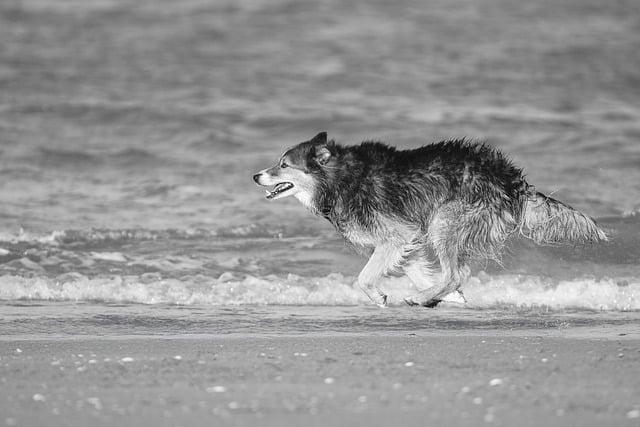Max, a cheerful golden retriever, loved to fetch and play. But one day, his owner noticed something unusual: Max was hiding under the bed, trembling and refusing to come out. This wasn’t the playful pup everyone knew. Such behavior can signal anxiety or fear, often stemming from changes in the environment or past trauma. Ignoring these signs can lead to serious emotional distress. Understanding what’s not normal in dog behavior is crucial for their well-being. Let’s prioritize our furry friends’ mental health and seek help when needed.
Contents
- Understanding Aggressive Behavior in Dogs and Its Implications
- Recognizing Signs of Anxiety and Stress in Canine Companions
- Identifying Obsessive Compulsive Behaviors in Dogs
- Addressing Excessive Barking and Its Underlying Causes
- Q&A
Understanding Aggressive Behavior in Dogs and Its Implications
Aggressive behavior in dogs can manifest in various forms, and recognizing these signs is crucial for pet owners. **Growling**, **snapping**, and **biting** are often the most alarming indicators, but they can also be accompanied by more subtle behaviors such as stiff body posture, raised hackles, and intense staring. Understanding these signals is essential, as they can indicate fear, territoriality, or even pain. Ignoring these signs can lead to dangerous situations for both the dog and those around it.
One of the primary implications of aggressive behavior is the potential for injury. A dog that exhibits aggression may pose a risk not only to other animals but also to humans, including children and elderly individuals. This risk can lead to serious consequences, such as legal actions, financial liabilities, and the possibility of having to surrender the dog. Therefore, it is vital for dog owners to take proactive measures to address and manage aggressive tendencies before they escalate.
Another significant aspect to consider is the impact of aggressive behavior on the dog’s overall well-being. Dogs that exhibit aggression often experience heightened stress and anxiety, which can lead to a cycle of negative behavior. This can result in a diminished quality of life for the dog, as well as strain on the relationship between the dog and its owner. By understanding the root causes of aggression, owners can work towards creating a more harmonious environment that fosters positive behavior.
it is important to recognize that aggressive behavior is not an inherent trait but often a response to specific triggers. Factors such as lack of socialization, past trauma, or inadequate training can contribute to a dog’s aggressive tendencies. By identifying these triggers and seeking professional help, such as working with a certified dog trainer or behaviorist, owners can implement effective strategies to modify their dog’s behavior. This proactive approach not only enhances the safety of the dog and those around it but also promotes a healthier, more balanced life for the pet.
Recognizing Signs of Anxiety and Stress in Canine Companions
Understanding the emotional landscape of our canine companions is essential for their well-being. Dogs, much like humans, can experience anxiety and stress, which can manifest in various behaviors that may be alarming to their owners. Recognizing these signs early can make a significant difference in your dog’s quality of life. Look out for changes in behavior that deviate from their normal routines, as these can be indicators of underlying stress or anxiety.
Common signs to watch for include:
- Excessive barking or whining: While vocalization is a natural form of communication for dogs, sudden increases in barking or whining can signal distress.
- Destructive behavior: Chewing furniture, digging, or other forms of destruction may indicate that your dog is trying to cope with anxiety.
- Changes in appetite: A sudden loss of interest in food or overeating can be a response to stress.
- Withdrawal or hiding: If your dog is seeking solitude or hiding more than usual, it may be a sign that they are feeling overwhelmed.
Physical symptoms can also provide clues about your dog’s emotional state. Pay attention to their body language, as it can reveal a lot about how they are feeling. Signs such as a lowered tail, flattened ears, or a tense body posture can indicate anxiety. Additionally, excessive panting or drooling, even when not engaged in physical activity, can be a response to stress. These physical manifestations are often overlooked but are crucial in understanding your dog’s emotional health.
consider the context of your dog’s environment. Changes such as moving to a new home, the arrival of a new family member, or even loud noises from outside can trigger anxiety. By being observant and proactive, you can create a supportive environment that minimizes stressors. If you notice persistent signs of anxiety or stress, consulting with a veterinarian or a professional dog trainer can provide valuable insights and strategies to help your furry friend regain their sense of calm.
Identifying Obsessive Compulsive Behaviors in Dogs
Understanding the nuances of canine behavior is essential for any dog owner. While dogs are naturally playful and curious, certain behaviors can indicate underlying issues, particularly when they become repetitive or compulsive. Recognizing these signs early can help you address them effectively, ensuring your furry friend remains happy and healthy.
Common indicators of obsessive-compulsive behaviors in dogs include:
- Excessive licking or grooming: If your dog is constantly licking their paws, body, or even surfaces, it may be a sign of anxiety or discomfort.
- Chasing shadows or lights: Dogs that fixate on moving shadows or reflections may be exhibiting compulsive tendencies, often stemming from boredom or stress.
- Repetitive barking: While barking is a normal form of communication, incessant barking without a clear trigger can indicate a compulsive behavior.
- Obsessive fetching: If your dog insists on fetching the same toy repeatedly, to the point of ignoring other activities, it may be a sign of an obsessive behavior pattern.
These behaviors can stem from various factors, including stress, anxiety, or lack of mental stimulation. Dogs are creatures of habit, and when they feel overwhelmed or bored, they may resort to compulsive actions as a coping mechanism. It’s crucial to observe your dog’s behavior in different environments and situations to identify any triggers that may lead to these obsessive actions.
Addressing these behaviors often requires a multi-faceted approach. Providing your dog with ample physical exercise and mental stimulation can significantly reduce the likelihood of compulsive behaviors. Engaging in interactive play, puzzle toys, and training sessions can help redirect their focus and energy. In some cases, consulting with a veterinarian or a professional dog trainer may be necessary to develop a tailored behavior modification plan that suits your dog’s specific needs.
Addressing Excessive Barking and Its Underlying Causes
Excessive barking can be a source of frustration for dog owners and a significant disruption in the household. Understanding the reasons behind this behavior is crucial for effective management. Dogs may bark excessively due to a variety of factors, including boredom, anxiety, or a lack of socialization. Identifying the root cause is essential to address the behavior appropriately and ensure a harmonious living environment.
One common reason for excessive barking is **boredom**. Dogs are naturally active and intelligent creatures that require mental and physical stimulation. When they lack sufficient exercise or engaging activities, they may resort to barking as a way to express their pent-up energy. To combat this, consider implementing a routine that includes daily walks, interactive toys, and training sessions to keep your dog engaged and satisfied.
Another significant factor contributing to excessive barking is **separation anxiety**. Dogs are social animals that thrive on companionship, and when left alone for extended periods, they may bark out of distress. This behavior can be mitigated by gradually acclimating your dog to being alone, providing comforting items, or even seeking the help of a professional trainer or behaviorist to develop a tailored plan for your pet.
Lastly, **lack of socialization** can lead to excessive barking. Dogs that are not exposed to various environments, people, and other animals may feel threatened or anxious, prompting them to bark excessively as a form of communication. To address this, it’s important to gradually introduce your dog to new experiences in a controlled manner, allowing them to build confidence and learn appropriate responses to different stimuli. By addressing these underlying causes, you can significantly reduce excessive barking and enhance your dog’s overall well-being.
Q&A
-
What are signs of aggression in dogs?
Aggressive behavior can manifest in various ways, including:
- Growling or snarling
- Baring teeth
- Snapping or biting
- Stiff body posture
If your dog exhibits these signs, it’s crucial to seek professional help to address the behavior effectively.
-
Is excessive barking a sign of abnormal behavior?
While barking is a natural form of communication for dogs, excessive barking can indicate underlying issues such as:
- Anxiety or fear
- Frustration or boredom
- Attention-seeking behavior
Understanding the cause of the barking is essential for finding a suitable solution.
-
What does it mean if my dog is hiding or avoiding interaction?
Dogs that frequently hide or avoid social interaction may be experiencing:
- Fear or anxiety
- Illness or pain
- Stress from environmental changes
Observing your dog’s behavior and consulting a veterinarian can help determine the root cause.
-
Why is my dog suddenly destructive?
Destructive behavior can arise from various factors, including:
- Separation anxiety
- Lack of physical or mental stimulation
- Changes in routine or environment
Addressing these issues promptly can prevent further damage and improve your dog’s well-being.
recognizing abnormal dog behavior is crucial for ensuring your pet’s well-being. By staying vigilant and informed, you can foster a healthier, happier life for your furry friend. Don’t hesitate to seek professional guidance when needed. Your dog deserves the best!

大家好,我是彼得潘,專業的手法身體治療師。我喜歡探索和研究各種主題,並透過與人工智慧的合作分享專業、實用、有趣的文章。我們定期進行人工審核,以確保內容的準確性。如果您發現文章中有任何不準確的地方,請隨時與我們聯繫,我們會及時糾正。您可以透過 [email protected] 與我們聯繫。



